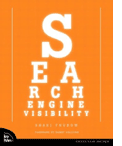Reviews:
Reporter World provides a variety of safety equipment, identification products, specialized high-visibility clothing, pertinent news, product reviews, book reviews and useful links specifically for reporters, writers, assignment editors, news correspondents, journalists, ENG crews, photographers, production staff, directors, segment producers, media security personnel, and freelancers: in short, anyone who is part of the news gathering, information reporting, or documentary film industries.
In this section we review various products and services of relevance to reporters, writers, correspondents, ENG teams and production staff. These products include cameras and accessories; computer hardware and software; scanners; printers; books and other products. Smaller, mini-reviews, are also available in other sections of this site including Products, Books and Movies.
We are constantly adding additional reviews to this section. If you have any suggestions for other products you would like us to review, simply e-mail us using the feedback address on our Terms of Service page. Please supply us with as much information as you can about the product (including name, manufacturer, model number) or book (including title, author, ISBN and publisher).
 Title: Search Engine Visibility Title: Search Engine Visibility
Author: Shari Thurow
Copyright: © 2003
Publisher: New Riders Publishing
ISBN: 0-7357-1256-5
Relevance: Search Engine Visibility is primarily aimed at Web designers, developers, coders and online marketers. It is also of interest to people who work at advertising agencies, copyrighters and sales -- in short, anyone who wants to increase their visibility over the Web and raise visitor counts.
Review: When the book arrived, one of our Web geekettes snatched it up before any of the regular reviewers ever had a chance. Returning it a week later, it was dog-eared, highlighted and a bit worse for wear. She then announced she would be redesigning many of our own Web pages to test what she had read and make the ReporterWorld site more visible to reporters and journalists around the world. So rather than a traditional review, we incorporated many of author's Shari Thurow "visibility suggestions" into our main site to see if they have merit. Not surprisingly given her reputation, they do.
The book starts out comparing and contrasting the two main types of search services: search engines and search directories. Although the vast majority of Web visitors don't understand the difference between the two, this luxury is not open to those of us who are responsible for maintaining Web sites and increasing our Web visibility.
It turns out that search engines (such as Google) and search directories (such as Yahoo!) "find" sites in a completely different way. To quote Thurow, "search engine databases are compiled through the use of special software robots, called spiders, to retrieve information from Web pages." On the other hand, the databases directory require the human touch -- individual sites are loaded and described by an actual human.
Thurow also explains there are a few cases where Web searchers inadvertently use a hybrid search tool that uses both a search directory and a search directory to find their way on the Web. MSN Search, for example, derives its primary search results from a search database (currently, the LookSmart directory), and its secondary results are derived from a search engine Inktomi. While these classifications may sound somewhat arbitrary -- and the subject of a college computer science class -- they are essential knowledge for anyone trying to figure out how things work on the Web -- and how they can work better.
Optimization Strategies: Text, Link and Popularity Components
Thurow also includes solid information about submission forms versus spidering, pay-for-inclusion search engine models, pay-for-placement models and importantly: search engine optimization strategies. Here, readers learn how various search engines build list of words and phrases from URLs and how these words and phrases must be built into strategic places in HTML tags and your site's body copy. Thurow's overall thesis is that placing certain, well chosen keywords on your site's pages -- and placing them well on the page -- is what separates a top 10 or 20 hit from one that is buried back in the 400,000 or so hits that searchers usually find in response to a query (and subsequently ignore).
Thurow also deals with the important subject of the ?Link Component as a key factor in increasing your Web site's visibility. Here, Thurow holds that poor navigation schemes, lousy HTML coding, the use of image maps, frames, JavaScript, dynamic or data-base driven Web pages and Flash can all have a hugely detrimental effect on the visibility of your site. Interestingly, Thurow recognizes that site designers often make a trade-off between sexing-up their site with lots of animation, huge graphics, and other things that may win awards (but irritate visitors), and making their sites simple, straight-forward and to the point (which makes them easy to index by search engine spiders).
It is difficult for many spiders to follow the links from within an image map, so Web designers who insist upon using these metaphors should provide an alternate way for a spider to follow links from page to page. Similarly, Thurow suggests that the major search engines are not able "to follow many of the links, including mouseovers/rollovers, arrays, and navigation menus, embedded with JavaScript.
The so-called "popularity component" of your site is also a factor in Web site rankings, which, in turn, is aided by two factors: link popularity (how many engines links to your site) and click-through or click popularity (how many searchers click on the entry to your site in the search engine). Throughout the book, Thurow demonstrates the subtle but important nuances about Web site visibility. Your site, for example, may be more "visible" (i.e., get a better relevancy ranking) if the directory associated with the particular search engine lists your site. Since MSN Search uses the LookSmart directory, a solid listing in LookSmart will help the visibility of your site in MSN Search!
An interesting section of the book examines how directory editors (that is, the humans in charge of adding new sites and determining the relevancy of their listings) evaluate each site they post. Thurow maintains there are five general characteristics that every Web site listed by a directory must possess: the site must have unique content; the site must be placed in the most appropriate database category; the site must represent a legitimate organization (that is, they won't list a company that won't be around in a few months); and the description for the site must be accurate.
Finally, the last category is perhaps the most important yet the most arbitrary: does the site adhere to the five key design rules? These design rules include: is the site easy to read, is it easy to navigate, is it easy to find, is it consistent in both design and layout, and is it quick to download? Thankfully, Thurow outlines many of the factors involved in each rating.
How to build better Web pages
Besides the many factors involved with building a better (i.e., more visible) site before construction begins, Thurow also explains in detail how using her three "building blocks" of search engine optimization can please your visitors, search engine spiders, and directory editors. The building blocks, of course, are the text component, the link component and the popularity component and Thurow maintains that only keeping these three components in mind (at all times) will your Web site's popularity grow.
To put this plan in motion, she carefully dissects each component into its many, many sub-parts. In the section outlining the site's text component, Thurow discusses keyword selection (a very important factor in visibility) and keyword placement. Navigation schemes, including hypertext links and absolutely and relative links, drop-down menus, robots exclusion protocol, Meta-Tag Robots Exclusion are all discussed in relation to the link component. Directories, industry-specific Web sites, professional associations and educational institutions, off-the-page criteria are discussed in relation to the popularity component.
Another good section deals with page design workarounds and is ideal for Web people who need to deal with the reality of the business world: their sales demanding more JavaScript be added to the site while in reality most search engines choke on this type of code; that the Marketing department wants Flash and frames but they both irritate visitors and confuse many search engines; and that dynamic Web pages sound sexy, but introduce so-called stop characters in URLs that halt search engines in the tracks. Nicely, Thurow also provides some information about pay-for-inclusion (PFI) programs and pay-for-placement (PFP) programs.
A great section follows detailing what to do after your site is built and includes topics such as directory submission (such as planning a submission campaign, selecting the best category, suggesting a new category, paid submissions and other factors; search engine submission (including planning the campaign, top referring sites and URLs, top entry pages). Also covered are key ways to re-submit your site including modifying a directory listing and what to do if your submission is rejected.
The final section deals with what Thurow calls the "Best Practices" of search engine marketing; including promoting keywords that are not related to your site; keyword stacking; keywords stuffing; hidden text; tiny text; hidden links; artificial link farms and Web rings; page swapping, page jacking and bait-and-switch; redirects; mirror pages; doorway, gateway and hallway pages; cloaking; domain spam; and typo spam and cybersquatting. She finishes up this section with an all-too-short piece that deconstructs common misconceptions about search engine visibility.
Overall:
Search Engine Visibility is highly recommended for anyone who is interested in optimizing his or her site to increase the relevancy and, consequently, the visibility, of their Web site. Unlike many other books in the market connected with Web design, Search Engine Visibility gives specific, real-world examples of what to do -- and what not to do -- to make your site more search engine and search directory friendly. And, yes, the book also receives the hard-won approval of our resident Web geekette: several of our own site relevancies have vaulted higher after her team implemented some of the tips contained within the book's pages.
End of Review
Have your say.
You can give us your feedback by visiting our Terms of Service page.
Buy this book.
If you wish to buy this book right now, please click here.
Read other reviews.
If you wish to return to the Reviews page, please click here.
|
|
|





